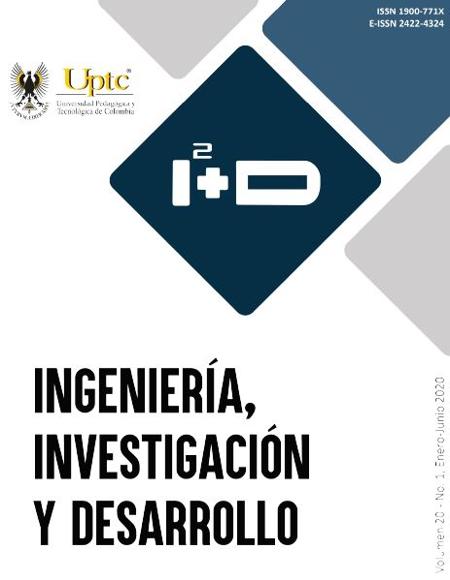Impact of dumping of wastewater from carbon washing on the physicochemical properties of the soil

Abstract
The coal process is one of the most important activities in economic growth in the country, however, in recent years nature itself has given evidence that show the impacts on the soil due to mismanagement and lack of human awareness, such as deterioration and loss of fertility. Therefore, this study determined the physicochemical impacts on the organic layer of the soil caused by the dumping of wastewater from the carbon washing process in the surrounding soils to the washing plants, or direct sources of dumping. In this sense, and through a quantitative and qualitative study of wastewater, the presence of substances was determined by the near infrared spectrometer method, conductivity, pH with multiparameter, turbidity by the Nephelometer method and the Biological Oxygen Demand with the measurement of DBO BD 600. In the same way, for representative soil samples, pH, porosity, apparent density, saturation humidity was evaluated by the cylinder method of known volume, conductivity and organic matter empirically. The results showed the presence of heavy metals, pH from 3.45 to 8.64 within the acidity ranges, high values in heavy elements such as CA2 + in 23500 to 80 784 mg / kg of soil, demonstrating that it is a highly contaminated soil.
Keywords
wastewater, impact, physicochemical parameter, coal production, soil
References
- I. M. Alemán Vásquez y F. P. Guido Paniagua, «Comparación De Dos Técnicas Para La Determinación De Carbono Orgánico Del Suelo, En
- El Lafqa Departamento De Química,» Repositorio Institucional UNAN-Managua, 2015.
- B. d. l. r. d. Colombia, «La economia del carbón,» 1997.
- u. m. e. UPME, «Guía minero ambiental,» 2005.
- L. Faba Peon, «Diseño de un sistema de tratamiento de aguas residuales para la depuración de efluentes procedentes de un lavadero de carbón,» p. 112, 2017.
- M. Guerrero Useda y V. Pineda Acevedo, «Contaminación del suelo en la zona minera de Rasgatá bajo (Tausa). Modelo conceptual.,» Ciencia e ingeniería neogranadina, vol. II, nº 1, pp. 57-74., 2016.
- Fátima tamtam, Folkertvan Oort, BarbaraLe Bot, TucDinh, S. Mompelat, M. Chevreuil, I. Lamy y M. Thiryd, «Assessing the fate of antibiotic
- contaminants in metal contaminated soils four years after cessation of long-term waste water,» Science of the total environment, vol. 409, nº 3, pp. 540-547, 2010. DOI: https://doi.org/10.1016/j.scitotenv.2010.10.033
- A. Gustavo, «Ph en agua por electrometría,» Instituto de Hidrología, Meteorología y Estudios Ambientales, Bogotá, 2007.
- IDEAM, «Instructivo para la toma de muestras de aguas residuales,» Bogotá, 2007.
- Lovibond, «Sistema de medición DBO BD 600,» 2019.
- D. Sanabria Suárez, «Conductividad Eléctrica Por El Método Electrométrico en agua,» Instituto de hidrología, Meteorología y Estudios Ambientales, Bogotá, 2006.
- A. Jarquín Sánchez, S. Salgado García, D. J. Palma López y W. Camacho Chiu, «Analysis of soil organic matter in tropical soils with near-infrared spectroscopy (NIRS) and chemometrics,» Ciencia e investigación agraria., vol. 39, nº 2, pp. 387-394, 2012. DOI: https://doi.org/10.4067/S0718-16202012000200015
- J. Espinosa y E. Molina, «Acidez y encalado de suelos,» International Plant Nutrition Institute, pp. 3-6, 1999.
- Energético-UPME, «Guía de orientación para el minero sobre el correcto manejo de vertimientos para la minería de metales preciosos y de carbón,» 2015.
- S. J. McKean, «Manual De Análisis De Suelos Y Tejido Vegetal,» Centro Internacional de Agricultura Tropical· CIAT, pp. 11-15, 1993.
- B. d. l. República, «Minería en Colombia: Institucionalidad y territorio, paradojas y conflictos,» Imprenta Nacional de Colombia, Bogotá, 2003.
- A. Muñoz Ospino, «Optimización del sistema de bombeo y manejo de las aguas residuales producto de la explotación minera en la mina de carbón San Fernando, operada por carbones San Fernando SAS, vereda Paso Nivel, Amaga-Antioquia,» Facultad de ciencias-Escuela de ingenieros de minas , 2016.
- M. Guerrero Useda y V. Pineda Acevedo, «Contaminación del suelo en la zona minera de Rasgatá bajo (Tausa). Modelo conceptual,» Ciencia e ingeniería neogranadina, vol. 26, nº 1, pp. 57-74, 2016. DOI: https://doi.org/10.18359/rcin.1664
- B. Gutierrez Rapalino y Y. Domínguez Haydar, «Contribución de Pheidole fallax y Ectatomma ruidum (Hymenoptera: Formicidae) en la dispersión y germinación de semillas en áreas rehabilitadas de la mina de carbón del Cerrejón, Colombia,» Revista de Biología Tropical, vol. 65, nº 2, 2017. DOI: https://doi.org/10.15517/rbt.v65i2.24639
- S. Ambar Guzmán, «Degradación de un suelo por efecto de residuales de la empresa cerámica del municipio San José de las Lajas,» Ciencias técnicas agropecuarias, vol. 17, nº 3, pp. 45-51, 2018.
- Argota Correa, «Desarrollo socioeconómico regional: impactos de la minería artesanal en el bajo Cauca Antioqueño,» Internacional de cooperación y desarrollo, vol. 4, nº 1, pp. 46-61, 2017. DOI: https://doi.org/10.21500/23825014.3116
- M. Gregory y A. Yaxley, «Methane-bearing fluids in the upper mantle: an experimental approach,» Contributions to mineralogy and petrology, pp. 1-14, 2018.
- C. Florez Florez, J. León Pelaez, N. Osorio Vega y M. Restrepo Llano, «Dinámica de nutrientes en plantaciones forestales de azadirachta indica (meliaceae) establecidas para restauración de tierras degradadas en Colombia,» Biológico tropical, vol. 61, nº 2, pp. 515-529, 2013. DOI: https://doi.org/10.15517/rbt.v61i2.11144
- R. J. Previdelli Marco, «Características productivas, morfológicas y estructurales,» Ciencia rural, vol. 43, nº 7, pp. 1238-1244, 2013. DOI: https://doi.org/10.1590/S0103-84782013005000085